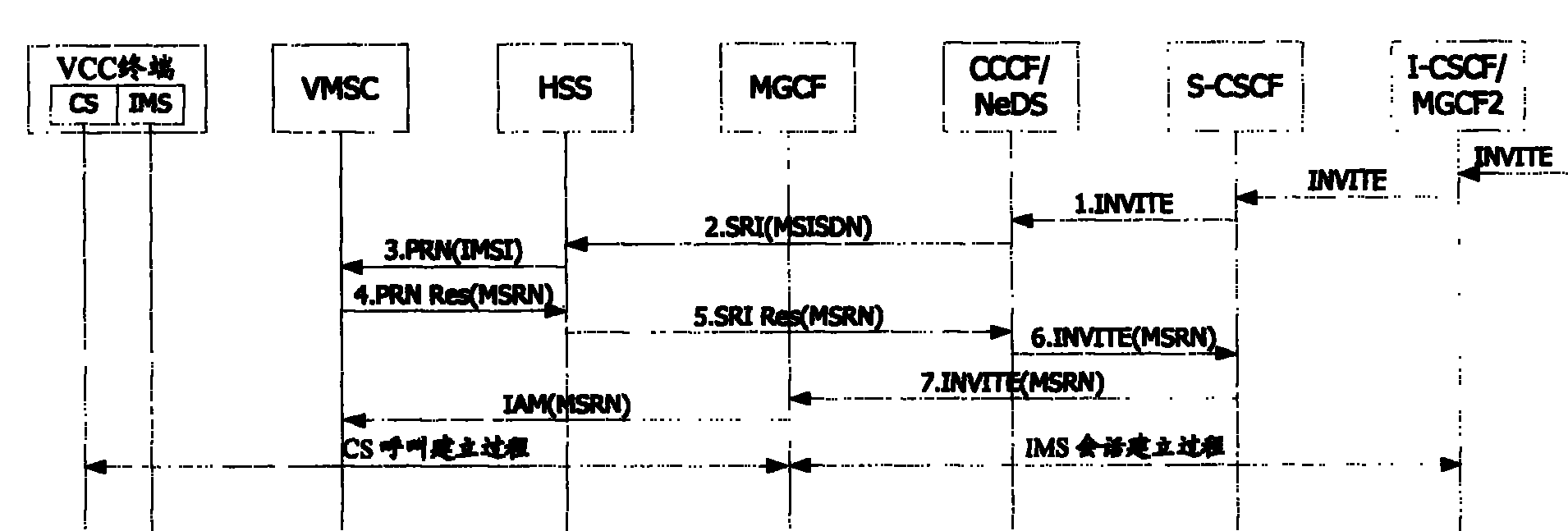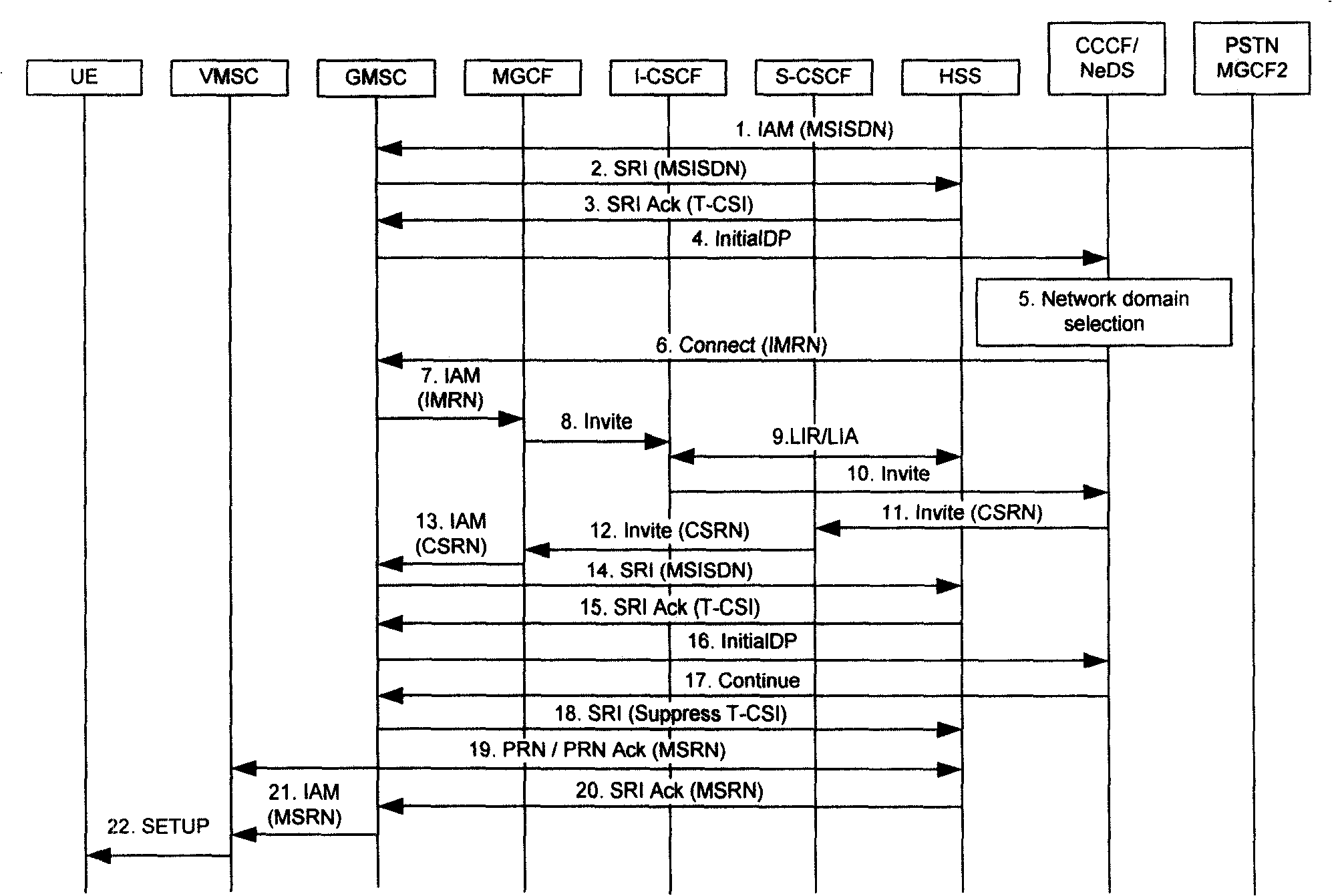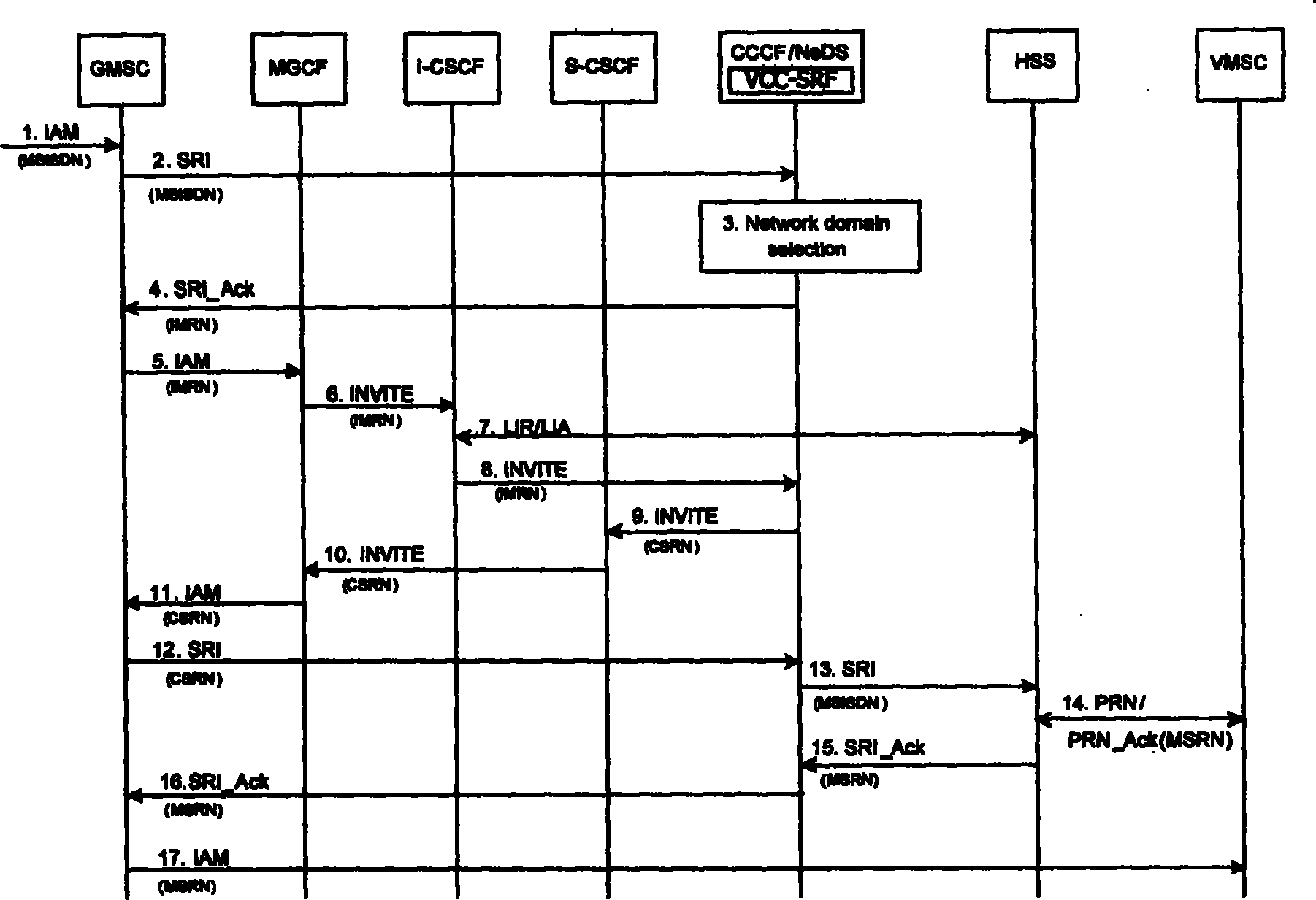Method, network and apparatus for processing afterservice
A late forwarding and service technology, applied in the field of communication, can solve the problems of not being able to obtain service notifications, not being able to update user call status, and not being able to release
- Summary
- Abstract
- Description
- Claims
- Application Information
AI Technical Summary
Problems solved by technology
Method used
Image
Examples
example 1
[0169] Method Example 1: The VCC service control entity is co-established with the GMSC (the GMSC is the incoming GMSC in the IMS domain) to complete the processing of the late forwarding service. see Figure 14 shown, including the following specific steps:
[0170] 1. The call has been routed to the IMS domain, and the CSCF triggers the call to the VCC service control entity through service triggering.
[0171] 2. When the VCC service control entity decides to connect the user in the CS domain, it will send an SRI message as the GMSC to the HLR to query the location of the user. The SRI message carries a routing optimization indication indicating that the late forwarding needs to be initiated by the GMSC, and at the same time carries the GMSC's Address (that is, the address of the VCC service control entity) and call reference number.
[0172] 3. The HLR sends a PRN to the VMSC where the user resides to request a roaming number, and the PRN message contains a routing optim...
example 2
[0183] Method Example 2: The VCC service control entity and the GMSC are set separately (here the GMSC is the incoming GMSC of the IMS domain), and intelligent triggering is adopted to complete the processing of the late forwarding service. see Figure 15 shown, including the following specific steps:
[0184] 1. GMSC1 receives the call connection signaling.
[0185] 2. The GMSC1 applies for user data from the HLR.
[0186] 3. The HLR downloads the called smart trigger to the GMSC1.
[0187] 4. GMSC1 triggers to the VCC service control entity (routing redirection entity) according to the trigger, and the call reference number 1 of this call and the address of GMSC1 are carried in the message.
[0188] 5. The VCC service control entity (routing redirection entity) records the call reference number 1 and the address of GMSC1, and returns an IMRN (IMS Routing Number) to GMSC1 to instruct GMSC1 to route the call to the IMS domain.
[0189] 6. GMSC1 routes the call to the IMS d...
example 3
[0207] Method Example 3: The VCC service control entity and the GMSC are set separately (here the GMSC is the incoming GMSC of the IMS domain), and the processing of the late forwarding service is completed by intercepting signaling. see Figure 16 shown, including the following specific steps:
[0208] 1. The call arrives from the CS domain to the GMSC1 of the home network to which the called party belongs.
[0209] 2. The GMSC1 sends an SRI message to the HLR to obtain the user location information, and the message contains the SOR operation supported by the GMSC1 and the call reference number 1 and the address of the GMSC1.
[0210] 3. The VCC signaling interception entity intercepts the SRI message and processes it. When the decision needs to pass the call through the IMS domain, the route redirection entity of the VCC service control entity (set together with the signaling interception entity) saves the call reference number 1 and address of GMSC1, and then returns the ...
PUM
 Login to View More
Login to View More Abstract
Description
Claims
Application Information
 Login to View More
Login to View More - R&D
- Intellectual Property
- Life Sciences
- Materials
- Tech Scout
- Unparalleled Data Quality
- Higher Quality Content
- 60% Fewer Hallucinations
Browse by: Latest US Patents, China's latest patents, Technical Efficacy Thesaurus, Application Domain, Technology Topic, Popular Technical Reports.
© 2025 PatSnap. All rights reserved.Legal|Privacy policy|Modern Slavery Act Transparency Statement|Sitemap|About US| Contact US: help@patsnap.com



